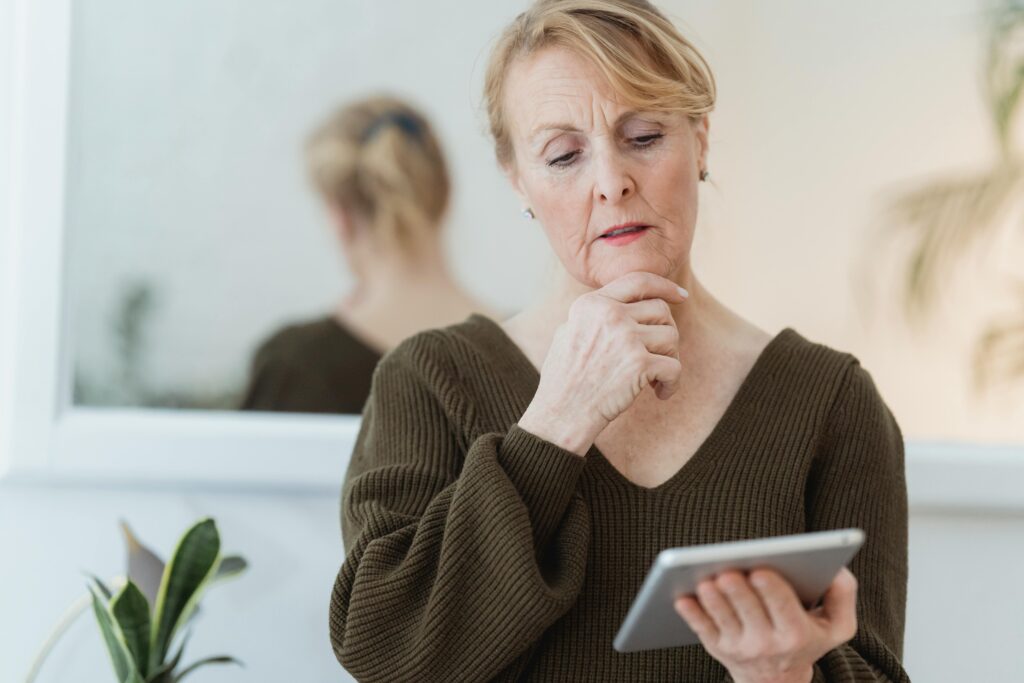Stair Lift Physical Ability: what is Needed?
When considering the installation of a stair lift, it’s important to assess the level of mobility and physical ability required to operate it safely. A stair lift can be a life-altering addition to your home, offering you freedom and independence. However, it’s crucial to understand the physical requirements necessary to use one.
Let’s look at what being ‘able-bodied’ means in the context of operating a stair lift and explore the abilities typically needed to use a stair lift effectively.
Physical Capabilities Required

Seating and Rising
The ability to sit down and rise from the seat of the stair lift is fundamental. You should be able to do this with or without minimal assistance. If this is going to be a problem because of your specific mobility difficulties then there are alternative solutions to a regular stair lift.
Balance
While seated, you should have enough core strength to maintain balance during the stair lift’s movement without the risk of falling off. Seat belts are an important safety feature that all quality modern stair lift models include, but if a seat belt is still not enough there are alternative solutions like harnesses.
Manual Dexterity
Operating the controls of a stair lift typically requires some level of manual dexterity. The user needs to be able to press buttons or use a joystick, though adaptive devices are available for those with limited hand mobility.
Cognitive Ability
Understanding how to operate the stairlift and being able to remember the steps each time is important for safe use. Modern stairlifts are designed with simplicity at the core of the user experience.
However if you would like assistance with understanding the operation of a certain stair lift, you can contact senior stair lifts and ask for advice.
Four Adaptations for Different Movement Abilities
1: Swivel Seats
For those with limited mobility, a swivel seat can make transferring onto and off the stair lift easier. With some models and brands such as handicare you can get powered swivel seats that will spin around with the use of automatic controls.
2: Adjustable Controls
Some stair lifts come with adjustable controls to accommodate users with limited dexterity or strength. With stair lift models such as TK Elevators you can have a detached remote control that you could hold separately from the stair lift.
3: Supportive Seating
Options for additional support, like harnesses or supportive straps, can help those who have trouble maintaining balance. Modern quality stair lift’s in the UK have seat belts installed as standard but for some this will not be enough to support them and ensure stability when going up and down a staircase.
4: Remote Controls
Remote controls can assist users who cannot operate standard controls due to their physical ability. They can also be used by caregivers to operate the stair lift from the top or bottom of the stairs.
Evaluating Your Situation

Professional Assessment
Your GP, an occupational therapist or a healthcare provider can assess your mobility levels and recommend whether a stair lift is suitable for you. It is important to consult your GP or healthcare professional and consult with them as to whether a stair lift is right for you.
Stair lift Demonstration
Trying out a stair lift for sale can help determine if you can use it comfortably and safely. It is worth getting a demonstration especially if you are looking at getting second hand stair lifts.
Your physical mobility needs are the priority for the usefulness of the stair lift so it is vital that you can see if a certain stair lift is right for you.
Alternative Solutions
If a traditional stair lift doesn’t suit your needs, there may be alternative solutions. Standing stair lifts are ideal for those who are having difficulty with mobility and also are having difficulty sitting down.
The Role of Caregivers
Assistance
A caregiver can assist with transferring to and from the stair lift, as well as operating it if necessary. The ability to access all of your house is a priority, so it is worth considering looking at help in your home from a paid carer.
Which have made an article that the NHS has even linked to which covers how to look at & compare different paid carer services. With your carer a physical mobility test will be worth bringing up.
Training
Both the user and any caregivers should be trained on the safe use of the stair lift. If you have had a chair lift installed It is vital that the appropriate training is given to the user as the position of any mobility aids such as wheelchairs are positioned correctly.
Safety Precautions
Emergency Systems
Stair lifts often come with emergency stop buttons and other safety features in case of difficulty during use. Modern stair lifts will also have sensors that will automatically stop the stair lift if there are any obstructions detected on the rail of the stair lift.
Power Outages
Modern stair lifts are designed to be battery-operated to ensure they can still be used during a power outage. If your stair lift is not functioning or has no signs of life there may be something wrong with the battery & may need a trained stair lift engineer to diagnose the issue.
In Summary
Being ‘able-bodied’ enough to use a stair lift means having the necessary mobility, strength, and cognitive abilities to operate it safely and independently or with assistance.
It’s important to realistically assess these factors before deciding to install a stair lift. Companies that provide stair lifts like Senior Stairlifts offer no-obligation home visits to assess your specific needs and can demonstrate the stair lift’s features and operation.
With the right adaptations and support, many people find that a stair lift can significantly enhance their quality of life.